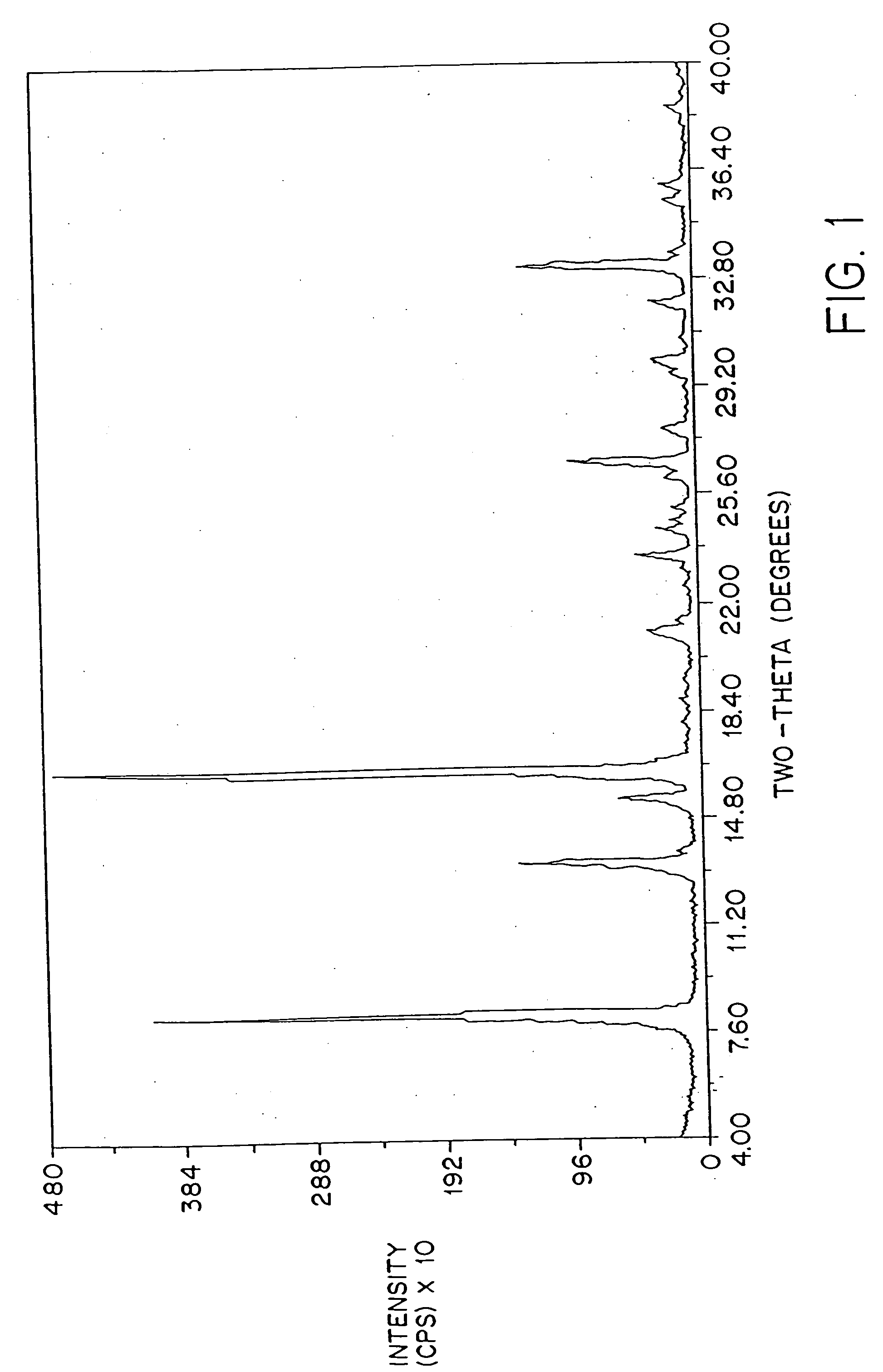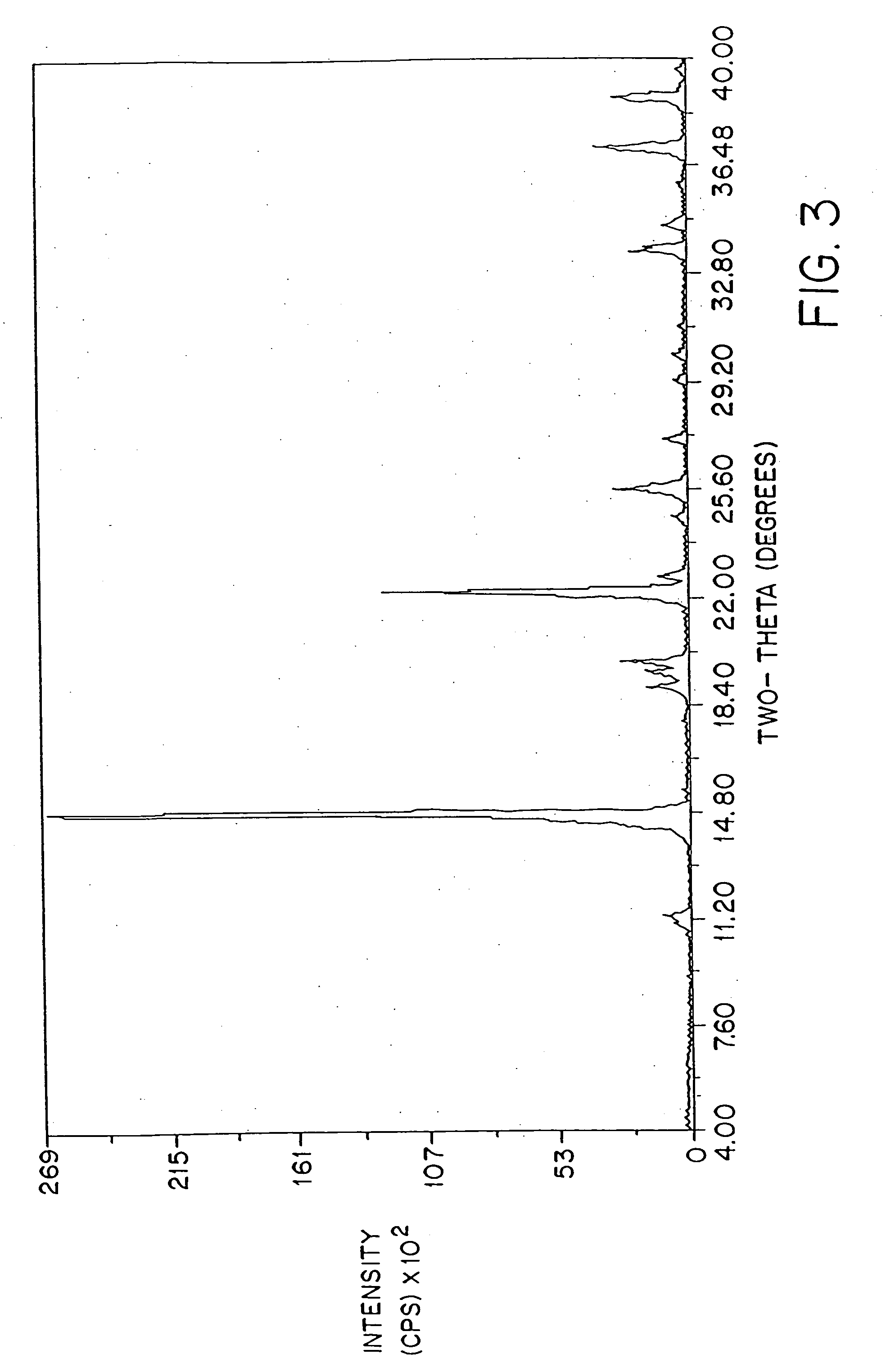Stable amorphous amifostine compositions and methods for the preparation and use of same
a technology of amifostine and composition, which is applied in the direction of drug compositions, antinoxious agents, active ingredients of phosphorous compounds, etc., can solve the problems of not being able to effectively sterilize bulk crystalline amifostine, not being sterile, and not being able to be used in parenteral administration to humans. , to achieve the effect of increasing the cost of handling the drug and making the use of the drug more difficult in hospitals and clinics
- Summary
- Abstract
- Description
- Claims
- Application Information
AI Technical Summary
Benefits of technology
Problems solved by technology
Method used
Image
Examples
example 1
5.1. Example 1
Stable Amorphous Amifostine Dosage Form Comprising Nicotinamide
[0087] An aqueous solution of 100 mg / mL amifostine and 12.5 mg / mL nicotinamide (Aldrich) is sterile filtered at 25° C. through a 0.2 μm filter, and then divided into 5 mL aliquots,.each of which is transferred to 10 mL vials. Lyophilization stoppers are placed on the vials and the samples are loaded onto the freeze-dryer shelf maintained at 5° C. The shelf temperature is decreased to −45° C. over 60 minutes, at which temperature it is kept for about 3 hours. The freeze-dryer condenser is then turned on and chamber is evacuated to about 100 μm Hg. After the chamber vacuum has equilibrated, the shelf temperature is ramped to −25° C. over 60 minutes while the vacuum is held constant. The shelf temperature is held at −25° C. for about 48 hours. The shelf temperature is then ramped to −10° C. over 60 minutes, and then maintained at −10° C. for 24 hours. Finally, the shelf temperature is ramped to about 35° C. o...
example 2
5.2. Example 2
Stable Amorphous Amifostine Dosage Form Comprising Nicotinamide and PVP
[0089] An aqueous solution of 100 mg / mL amifostine, 12.5 mg / mL nicotinamide (Aldrich), and 10 mg / mL polyvinylpyrrolidone 30 (PVP30: BASF Aktiengesellschaft, Feinchemie, 0-6700 Ludwigshafen, Germany) is sterile filtered at 25° C. through a 0.2 μm filter, and then divided into 5 mL aliquots, each of which is transferred to 10 mL vials. Lyophilization stoppers are placed on the vials and the samples are loaded onto the freeze-dryer shelf maintained at 5° C. The shelf temperature is decreased to −45° C. over 60 minutes, at which temperature it is kept for about 3 hours. The freeze-dryer condenser is then turned on and chamber is evacuated to about 100 μm Hg. After the chamber vacuum has equilibrated, the shelf temperature is ramped to −25° C. over 60 minutes while the vacuum is held constant. The shelf temperature is held at −25° C. for about 12 hours. The shelf temperature is then ramped to −10° C. ov...
example 3
5.3. Example 3
Determination of Crystallinity
[0091] The crystallinity of the dosage forms of this invention may be determined by powder x-ray diffraction as described, for example, in Remington's Pharmaceutical Sciences, 18th ed. page 173; The United States Pharmacopeia, 23rd ed. (1995) pages 1843-1844.
[0092]FIG. 2 shows a typical powder x-ray diffraction spectrum of a dosage form of amorphous amifostine prepared according to the method of Example 1 which was measured with a Geiger-Müller detector using nickel-filtered Cu Kα radiation. This diffraction pattern contains the broad baseline characteristic of amorphous material. The peaks at 2θ˜14.8, 25.6, and 26.3 are attributed to nicotinamide and / or noise. This assignment is clear from FIG. 3, which shows the x-ray powder diffraction pattern of crystalline nicotinamide.
[0093]FIG. 4 shows the difference between the x-ray diffraction patterns of crystalline amifostine prepared as described by U.S. Pat. No. 5,591,731 and that of an am...
PUM
| Property | Measurement | Unit |
|---|---|---|
| Temperature | aaaaa | aaaaa |
| Temperature | aaaaa | aaaaa |
| Temperature | aaaaa | aaaaa |
Abstract
Description
Claims
Application Information
 Login to View More
Login to View More - R&D
- Intellectual Property
- Life Sciences
- Materials
- Tech Scout
- Unparalleled Data Quality
- Higher Quality Content
- 60% Fewer Hallucinations
Browse by: Latest US Patents, China's latest patents, Technical Efficacy Thesaurus, Application Domain, Technology Topic, Popular Technical Reports.
© 2025 PatSnap. All rights reserved.Legal|Privacy policy|Modern Slavery Act Transparency Statement|Sitemap|About US| Contact US: help@patsnap.com



